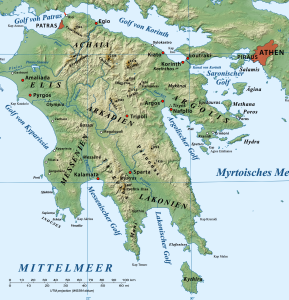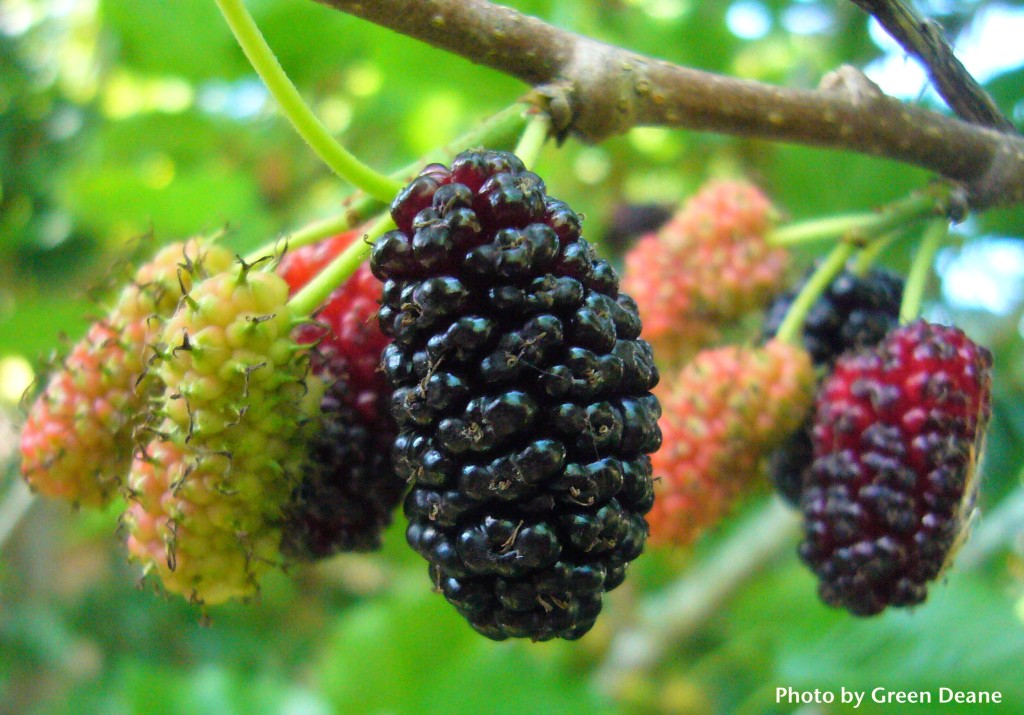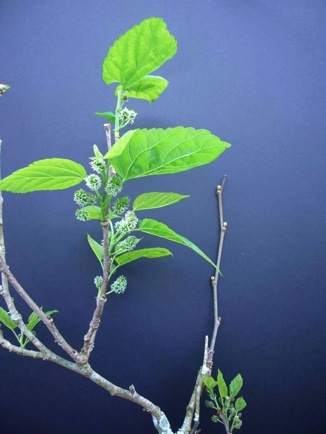Mulberries: Glucose-controlling hallucinogen
I used to get a lot of dates using mulberries.
Not to sound sexist, but most women like men who can cook. And when the mulberries were in season I would ply a young lass or two with mulberry pie or sorbet explaining this was a delicious concoction unavailable anywhere else, kind of like me ….hint-hint, wink-wink. It worked so well that every season (before I owned my own land) I would scout out available mulberry trees and ladies and plan to match them up for gastro-amorous intentions. Mulberries, in my case, Morus rubra (MOE-russ RUBE-ruh) are full of life. One spring I trimmed my mulberry and used the branches for stakes. They rooted and grew. Not one to get in nature’s way I dug them up, gave them to a friend, and they are still growing.
Mulberries are native to North America and also introduced. Their berries are extremely healthy, and other parts of the tree have medical uses as well. The berry is used in pies, tarts, wines and cordials. Cooked, such as in muffins, they are much like blueberries in flavor. The Black Mulberry and Red Mulberry, the latter native to eastern North America, have the strongest flavor. The Asian Mulberry, naturalized in urban areas, is edible but a clear distant third in taste. Mature fruit of all are packed with reseveratrol. Unripe fruit and mature leaves have a white sap that’s intoxicating and mildly hallucinogenic. White Mulberry tea quite popular in Japan. White Mulberry leaves are also the sole food source for the silkworm (Bombyx mori, named after the Mulberry genus Morus). The worms are edible cooked but not that tasty.
Mulberry leaves can help regulate blood sugar levels, and reportedly play a role in losing weight by controlling sugar cravings. They are also is a source of Vitamin C and carotene. Mulberries have anthocyanins which are edible pigments commonly called antioxidants. Young leaves cooked are edible

The Mulberry Shaped Portion of Greece. Green Deane’s family is from south of Sparta, about two-thirds the way down the peninsula, The Mani.
As for the name, Ruba is red. Morus is a bit more involved. A Babylonian story later incorporated into Greek mythology attributes the reddish color of the mulberry fruit to the tragic death of lovers. The Greek god Moros, who drove men to their fate, arose from that and where we get the English word, through Dead Latin, “morose.” Contemporary Greeks call the mulberry Mouro and southern Greece, Peloponnese, is often called Mora because it is roughly shaped like a mulberry leaf… if you’ve had too much retsina…
At one time the Paper Mulberry was grouped with other mulberries, and is closely related, but is now called Broussonetia papyrifera (broo-soh-NEE-she-uh pap-ih-RIFF-er-uh.) Its fruit is edible and it can grow into a very large tree. Here in the South, it’s a linden-like tree that often defies identification. Its young leave are also edible when cooked, however, they are chewy. To see a separate entry on Paper Mulberry go here.
Nutritionally, the mulberry berries area powerhouse: They’re low in saturated fat, cholesterol and sodium, high in Vitamin C, Vitamin K, iron, dietary fiber, riboflavin, magnesium and potassium, about 4.5 carbs per 100 grams, 120 calories. Mulberry leaves are consider animal food if not intoxicating to people. But young leaves are edible cooked, boiled or stir-fried. Fresh mulberry leaves are 71.13 to 76.68% moisture, 4.72 to 9.96% crude protein, 4.26 to 5.32% total ash, 8.15 to 11.32% Neutral Detergent Fiber (NDF), 0.64 to 1.51% crude fat, 8.01 to 13.42% carbohydrate and 69 to 86 kcal/100 g for energy. Ascorbic acid ranged from 160 to 280mg/100g β-carotene from 10,000.00 to 13,125.00 μg/100 g, respectively. Iron, zinc and calcium ranged from 4.70-10.36 mg/100 g for iron, 0.22-1.12 mg/100 g for zinc, and 380-786 mg/100 g, for calcium.
The following recipes are from Living off the Land and Wild Edibles by the late Marian Van Atta, whom I knew some 40 years ago when I was living in Rockledge, Florida. She was a rotund homebody and more what we would call today a permaculturist rather than a forager.
Mulberry Pie: One baked 9″ pie crust. 4 c. Stemmed mulberries. 1/4 c. Cornstarch. 3/4 c. Sugar. 1/2 c. Water. 2 T. Lemon or Lime juice. — Add sugar to mulberries in a saucepan. Mix cornstarch with water. Add to berries. Add juice. Cook over medium heat until mixture thickens and juice becomes clear. Pour into bake pies shell. Cool and serve.
Mulberry Vinegar: In a large bowl, place 3 quarts clean mulberries. Mash and pour 3 cups of boiling-hot white vinegar over berries. Cover with a towel and for 3 days, mix fruit with a wood spoon. Strain juice trough jelly bag. To each cup juice add one cup sugar. Boil together for 5 minutes. Pour into sterilized jars and seal. When ready to use, pour 2 T. Mulberry vinegar in an 8 ounce glass. Fill with water and ice.
Mulberry Sauce: To four cups of mulberries add 1 1/2 c. Brown sugar, 1 t. each of cloves and allspice, to mashed berries. Bring to boil. Simmer until thick stirring often. Bottle and seal.
Green Deane’s “Itemized” Plant Profile
IDENTIFICATION: Mulberries are fast-growing but rarely exceed 40 feet, easily trained to be short and easy to harvest. Leaves alternate, simple, often lobed, toothed on the edge. The fruit is about an inch long changing from white to red to dark purple or black. Reminds one of a long blackberry, will stain your fingers purple.
TIME OF YEAR: Fruits in late spring, what ever that might be in your climate.
ENVIRONMENT: Likes moist soil and prefers hardwood forests. However, in Florida they frequent abandoned truck farms and other fields. Often are found growing by hotel and apartment complexes parking lots, and roadsides.
METHOD OF PREPARATION: Out of hand or for anything one would use a blackberry, strawberry or blueberry for. Young leaves of any of the mulberry species cooked, though they can be tough.




